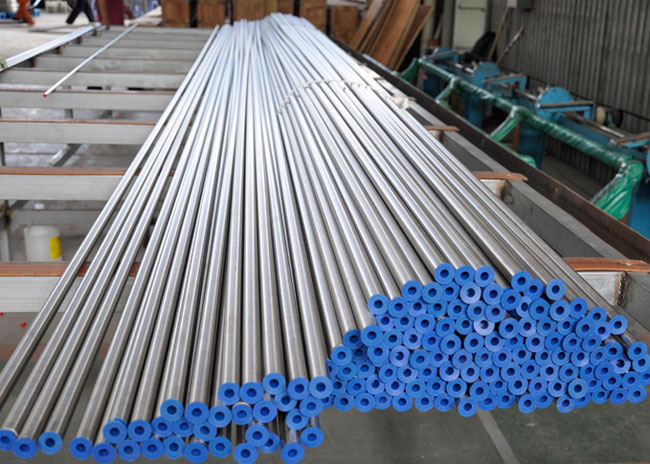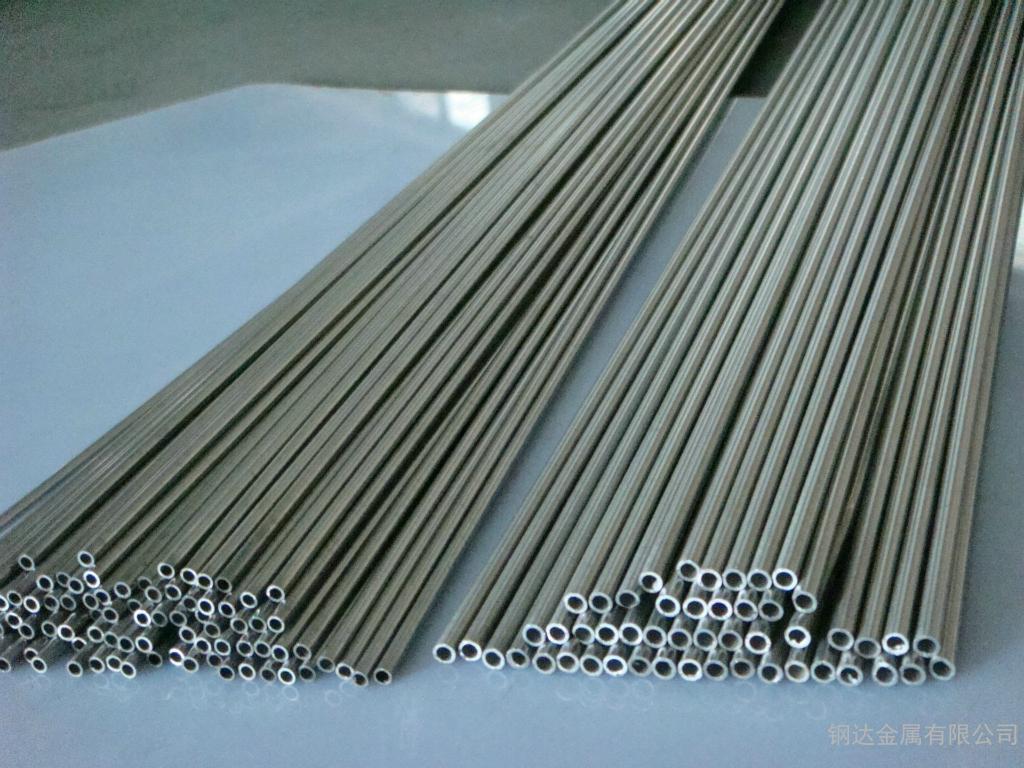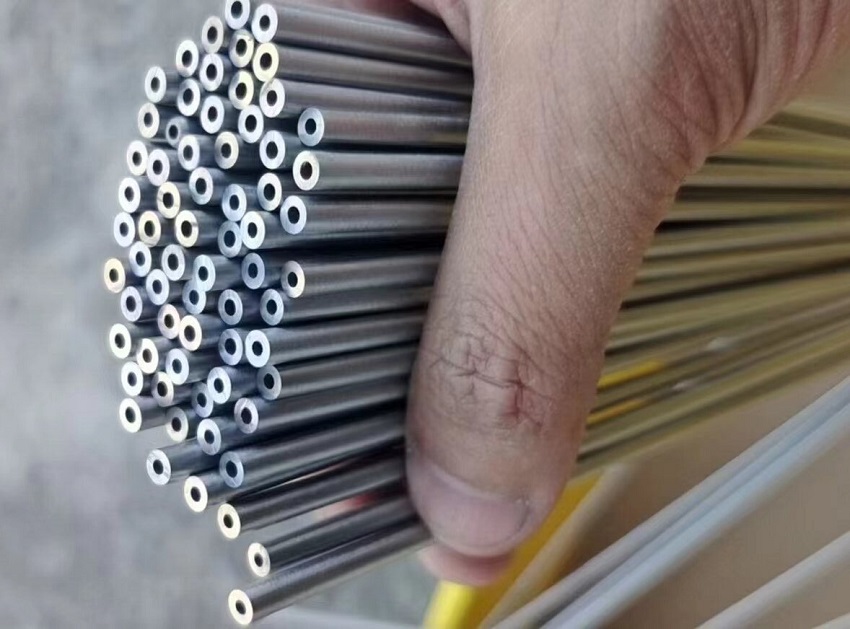NEWS CENTER
A Guide to Bearing Steel Tube
Bearings are an important component of mechanical equipment because they support mechanical rotating bodies, reduce friction coefficients during movement, and ensure that mechanical equipment runs smoothly. Bearings can be classified into sliding, spherical, rolling, and other forms.
Function:
Prevent deformation of rotating shafts and moving parts
Reduce friction, energy loss, and heat creation
Bear loads and prevent component damage
Increase mechanical operation accuracy
Reduce noise
What is bearing steel tube?
Bearing steel pipe is a hot-rolled or cold-rolled/cold-drawn seamless steel pipe used to make ordinary rolling bearing rings with high precision.
Bearings are subjected to a great deal of pressure and friction during operation, so bearing steel must have a high and uniform hardness, wear resistance, and elastic limit. The chemical composition of bearing steel is exceedingly homogeneous, as is the content and distribution of nonmetallic impurities and carbides, making it one of the most demanding steel grades in all steel production.
Different types of bearing steel are suitable for different working conditions, such as high hardness, high toughness, corrosion resistance, or high-temperature performance.
Bearing steel can be divided into the following categories according to its chemical composition and performance characteristics:
✔ High-carbon chromium-bearing steel
✔ Carburizing bearing steel
✔ Stainless corrosion-resistant bearing steel
✔ High-temperature bearing steel
✔ Chromium-free bearing steel
✔ Medium-carbon bearing steel
✔ Special-purpose bearing steel
⚑ High-carbon chromium-bearing steel
Its also called high-carbon anti-friction bearing steel. It is the most common type of bearing steel for manufacturing bearings and bearing parts. It is widely used and has a high carbon and chromium content, such as 1% C and 1.5% Cr.
- High hardness
- Good wear resistance
- Good dimensional stability
- Some rust resistance
- High fatigue resistance
- High ductility
- Good hot and cold processing performance
Grade: GCr15 (GB), 100Cr6 (DIN), SAE 52100 (AISI)
General working temperature: -40 to 130℃
After high-temperature tempering, the working temperature can reach 250℃.
⚑ Carburizing bearing steel
Low-carbon alloy steel that has been strengthened and improved in wear resistance through carburizing heat treatment. The carburizing process forms a high carbonized surface layer on the surface. The carburized layer has a porcelain-like fracture and a fibrous fracture in the core.
Low carbon content, generally 0.1%-0.24%
- High surface hardness
- High wear resistance
- Good impact toughness
- Good fatigue resistance
Grade: SAE 4320, G20CrMo
Working temperature: -40 to 140℃
It can withstand high-impact loads and avoid brittle cracks, suitable for working conditions that require a combination of high toughness and wear resistance.
Bearings for automobiles, railway vehicles, and rolling mills
⚑ Stainless corrosion-resistant bearing steel
Stainless steel is used as the material, which is divided into martensitic stainless steel bearing steel, austenitic stainless steel bearing steel, ferritic stainless steel bearing steel, precipitation hardening stainless steel bearing steel, and duplex stainless steel bearing steel.
- High strength and hardness
- Excellent corrosion resistance, not easy to rust
- Good wear resistance
- Thermal stability
Grade: 304, 316, 440C, 17-4PH, 15-5PH
⚑ High-temperature bearing steel
Its mainly used to manufacture high-temperature bearings that can maintain good performance and service life in high-temperature environments.
Working temperature: 300-500℃
- High-temperature stability
- Good wear resistance
- High-temperature corrosion resistance
Production Process
Smelting
↓
Forming: hot rolling/cold drawing
↓
Heat treatment: quenching + tempering
↓
Quenching: improve the hardness and strength of bearing steel
↓
Tempering: reduce the brittleness of bearing steel, improve toughness and impact toughness
↓
Finishing: internal and external surface treatment + inspection
Specifications of Bearing Steel Tube
✔ Standards: GB/T 18254, ASTM A295
✔ OD:25-180mm
✔ WT:3.5-20mm
✔ Length:2-8m
Dimension Tolerance
|
Type |
Size |
Accuracy |
|
|
Normal |
High |
||
|
Hot Rolled Tube |
OD |
±1% |
+1% -0.5% |
|
WT |
+15% -10% |
+15% -5% |
|
|
Cold Drawn Tube |
OD |
D≤50mm: +0.5mm |
D≤65mm: +0.2mm -0.1mm |
|
D>50mm: +1mm |
D>65mm: ±0.6mm |
||
|
WT |
+10% -5% |
+10% -2% |
|
Properties of Bearing Steel tube
- High hardness: After heat treatment (such as quenching and tempering), the bearing steel tube can reach a high hardness of 60-65 HRC
- High tensile strength and yield strength
- Excellent wear resistance
- High contact fatigue strength: prevents fatigue cracks in materials under long-term repeated stress
- Good purity
- Good corrosion resistance
- High-temperature stability
- Low-temperature stability
- Low expansion coefficient
- Good machinability
Applications
Bearings for industrial machinery
Bearings for automobiles
Bearing parts for aerospace
Bearings for railways and rail transit
请输入搜索关键字
确定






